Earth Religions and Ceremonial Magick
Karen Charboneau HarrisonShare
© Copyright 2023 Karen Charboneau-Harrison, All Rights Reserved.
Earth Religions such as Wicca share many outlooks and some vocabulary with Ceremonial Magick, but also have some fundamental differences with it. Both use magick (the controlled, focused use of energy, usually through ritual), both acknowledge the 4 elements, both use similar magickal tools (chalice, knife or sword, pentacle, wand, altar), both believe in personal responsibility and karma for one's actions and both tend to have initiations into deeper levels of practice and learning. EARTH RELIGIONS, however, see the earth as sacred, all beings as part of the divine spark, usually have personal deities - both male deities and female deities, don't believe in evil as a deity or sometimes even as a concept; follow closely the cycles of the moon as well as the seasons, see spirit and matter as being reflections of one another and are not Christian based. Most Earth Religion practitioners are also interested in herbs, incenses, spell work, astrology and divination. Earth Religions are spiritual pathways of worshipping the divine with a generous helping of magical practice; whereas CEREMONIAL MAGICK is not a religion - it is a way of invoking and using energy or forces to manifest one's desires. Although most ceremonial magickians have a strong Christian or Jewish background, it is a magickal practice separate from and not necessarily a part of their religious observances.
One of the most popular Earth traditions in the United States is Wicca, a branch of Paganism (from the Roman paganus, meaning 'of the country'). Wicca has both groups (covens - from the same root word as convene and convent) and solitaries. Most Wiccans worship The Goddess and The God; a few only The Goddess. Most groups have 3 levels of initiation, the first initiation happening after a year and a day of basic training, the second after the practitioner has mastered some more advanced skills in things such as divination, astrology, spell work, herbalogy and stone lore; and the third degree initiation when the person seeks to teach and counsel others and perhaps is planning to hive off into a group that they will lead. Some branches of Wicca are Gardnerian (Gerald Gardner), Alexandrian (Alex and Maxine Sanders, written about and practiced by Janet and Stewart Farrar) and Eclectic (most American Witches).
The Druids are a more hierarchical Pagan branch with three initiations as well - Bard, Ovate and Druid. The original Druids practiced in Gaul (The British Isles and France) and were the teachers, poets, musicians, philosophers, physicians, historians and lawmakers of the land. Druids would be considered the Celtic equivalent of the Brahmin caste in India.
Asatru and Odinism are Teutonic or Germanic branches of the Earth religions and are often confused with skinheads and such because the skinheads have adopted some of the symbology and the Teutonic Gods.
Today many people have become "Goddess worshippers" - they don't necessarily want to become Wiccan, but want to create their own brand of spirituality from reading and experience focusing on deity as female. Works by Barbara Walker, Patricia Monaghan and Riane Eisler would interest them. Native American practices have many similarities to western Earth Religion, but they don't consider themselves Pagan and would no doubt be insulted if they were called such.
CEREMONIAL MAGICK is based on Christianity, Hermetics and Qabalah and tends to see things in more dualistic or black/white terms. Most ceremonial magickians believe in the concept of evil or even a devil - although they are not worshipping or using these forces specifically. Ceremonial magick has its roots in early Egyptian and 7th century b.c.e. Greek and Roman magickal practices. Those cultures were influenced by Plato's ideas of dualism and emanation of divine energy into matter, but with spirit being superior to matter. During the Renaissance as philosophers, alchemists and astrologers began to travel throughout Europe and the Middle East sharing wisdom and trading techniques, ceremonial magick had a huge resurgence and many of the grimoires (literally the word 'grimoire' translates as lesson book - but grimoire has come to mean book of rituals, planetary correspondences, etc) used today are reprints of ones written during that time. Most ceremonial magickians are also interested in alchemy, Qabalah, magickal alphabets, Golden Dawn, and pathworking (guided meditations directed along one of the paths or links between the Sephiroth of the Tree of Life)
The most popular branches in Ceremonial Magick are the Golden Dawn, Thelema, Hermetics (Franz Bardon) and Alchemy:
Hermetics is Mystical wisdom which along with the Qabalah forms the basis of Western Occultism. Based on the writings of Hermes Trimegistis (a composite of Greek Hermes and Egyptian Thoth). Legend has it that core writings were on papyrus and stored in Alexandria (but burned when Alexander the Great invaded). Some Hermetic works are The Divine Pymander which tells how divine wisdom was revealed to Hermes. The Vision is about Hermes' mystical visions and cosmogony and the spiritual journey of the soul. The Emerald Tablet is inscribed with the whole of Egyptian mystical wisdom and includes the magickal secrets of the universe.
Alchemy is literally the art of transmutation (lead into gold) and is the foundation of modern chemistry and metallurgy. Symbolically it is the transformation of consciousness and the soul. It draws philosophically from the Hermetic traditions and by the 12th century had spread throughout Europe through the Muslim occupation of Spain (see books by Frater Albertus).
Golden Dawn (Hermetic Order of the) arose in England in the late 19th century and was founded by MacGregor Mathers. Other well-known members of the Golden Dawn were AE Waite, WB Yeats, Dion Fortune, Israel Regardie and Aleister Crowley. Golden Dawn practices and teachings were a mixture of Hermetics, Egyptian magick and Rosicrucian ideas. Within the Golden Dawn are 11 degrees based on the Sephiroth of the Qabalistic Tree of Life.
Thelema was founded by Aleister Crowley as a blend of Golden Dawn magickal techniques, sex magick of the OTO (Ordo Templis Orientis, a German based magickal fraternity of which he became the head in 1912) and yoga techniques. The "bible" of Thelema is The Book of the Law. Born into a fundamentalist Lutheran Brethren family, Crowley rebelled in every way he could. Perhaps not very emotionally mature, he delighted in shocking society - however, he was a brilliant compiler of information and wrote exhaustively about magickal technique and correspondences. Two of his best books are 777 and Magick in Theory and Practice.
Another member, Dion Fortune (Violet Firth) belonged to the Stella Matutina, outer order of the Golden Dawn. Believing she had a past life in Atlantis as a priestess, Dion channeled information regarding Atlantean teachings and was an adept ritualist. She wrote some great books, among them The Mystical Qabalah, Cosmic Doctrine, Sea Priestess and Moon Magic, Psychic Self Defense.
| Recommended Products | |
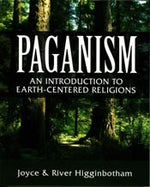 Paganism Paganism |
 Modern Magick Modern Magick |
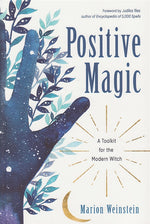 Positive Magic Positive Magic |
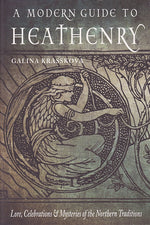 Modern Guide to Heathenry Modern Guide to Heathenry |
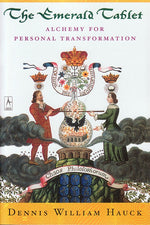 Emerald Tablet Emerald Tablet |
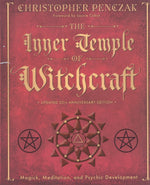 Inner Temple of Witchcraft Inner Temple of Witchcraft |
